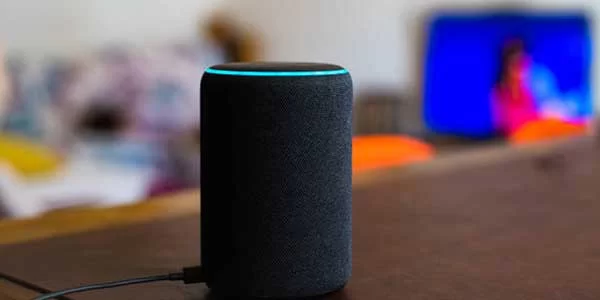Smart home technology assets are becoming prominent features in the modern household. A smart home is simply one that incorporates technology upgrades that make life easier (via Investopedia). From the use of an Alexa device from Amazon to heating and cooling elements that can be operated remotely, smart homes are making routine life more streamlined and everyday tasks simpler.
Smart home infrastructure might be sophisticated or simple, depending on your specific needs and circumstances. The first step in developing a smart home in your living space is determining which improvements will make the biggest impact for you and your loved ones.
Not every improvement will be beneficial to everyone. While some technophiles seek every imaginable modification and modernization, others may discover that a single smart gadget might suit all of their requirements. The bulk of households will lie somewhere in the middle of this spectrum, with a few important installations making life easier and typical duties less of a chore.
It’s worth investigating what kinds of additions might work best in your smart home. You’ll likely be surprised to find all that’s on the market these days and the amazing things they can do with ease.
So here is How to Turn Your House into a Smart Home
Consider A Smart Assistant Device For A Smooth Entry Into This Market.

Smart assistant devices are becoming more common in American households. According to Safe at Last, about 40 million Alexa devices have been sold in the United States, and this figure just includes one kind and brand of a smart assistant. There’s also Apple’s Siri, Samsung’s Bixby, and Google Assistant, all of which enhance productivity and give hands-free solutions in the house while also reporting big sales statistics.
A voice-activated smart assistant device can answer queries, adjust the lighting in the home, and play music from your connected accounts. These gadgets have been around for a long time, and newer models have incorporated displays, better speakers, and more efficient technology, all with the goal of offering the greatest possible experience to the user.
The first thing you’ll need to create a smart home for your property is a smart assistant. Acting as a voice-controlled central remote, the possibilities for customization are endless with the use of one of these smart tools.
More: In 2022 the Best Amazon Alexa-Enabled Speakers
Smart Switching Devices Can Result In Power Cost Reductions.

Smart switch controls on some of the integrated appliances and services that power the home are now found in many homes. The water heater, for example, can operate in a continuous cycle, boiling additional hot water each time the total temperature in the tank falls below a specified threshold (usually set between 120 and 140 degrees Fahrenheit, but this can be raised to approximately 180 degrees if necessary).
Instead of leaving the heater on standby all the time, you may use a smart switch to adjust cutoff and startup timings for improved energy efficiency and bill management. These timers have been around for quite some time. Notably, pool pumps are frequently powered by an analog timer that employs plastic switching components that are positioned in accordance with the unit’s clock rotation.
Instead of a conventional switch on the wall, smart switches may be operated via an app on your phone. This means you may turn off the heater in your smart home while away on vacation and then turn it back on when you arrive at the airport or are within a few hours of the house. Similarly, if you’re doing a lot of laundry when you get home, you may easily increase the heater’s duration.
More: Best Smart Light Switches 2022
Lighting Settings Can Provide Significant Ambience Benefits.

Intelligent lighting controls are used in a smart home. Compatible lightbulbs, with dimming capabilities and voice activation to make the procedure even easier, may make a significant impact in the quality of life and relaxation that you enjoy at home.
The ability to dim your lighting, and the added benefit of telling your smart home device to perform the function, can give your home a brand new look and feel
This is something that you want to avoid at all costs. Health Lighting notes that warm lighting lends itself to a restful and comfortable experience while cool, whiter light is best used in spaces that are designed for energy and productive activity. As a result, bedrooms and living rooms are served best by lower-temperature, warmer light bulbs versus areas like the kitchen or a home office.
More: List of Best Alexa Controlled Lights
Intelligent Camera Arrays Aid In Delivery And Other Tasks.

Cameras have made their way into homes all across the United States. Tom’s Guide lists a number of excellent security cameras for home use, noting that these installations are easy to set up and can provide a feed directly to your phone or another connected device for quick access and the best peace of mind possible.
Security cameras may significantly reduce criminal activity on your property. When it comes to preventing opportunity crimes, a highly visible camera is a useful asset. However, the deterrent criminals aren’t the only reason to deploy security monitoring systems across your smart home.
Brands have lately begun selling video doorbell systems to assist homeowners in controlling entry to their houses and ensuring the reception of goods and other necessities. A video doorbell sends a push message to your phone every time someone approaches the door, allowing you to guarantee that the dog sitter came on time, that delivery arrived, or that a child arrived home before curfew.
Smart cameras are typically motion-activated, and with Bluetooth and Wi-Fi connectivity, have become an immensely powerful tool in the arsenal of everyday homeowners and their smart homes.
More: Best Home Security Cameras without Subscription
Move Away From Grid Reliance with Renewable Solar Additions

Solar power is another important installation that you can tackle to reinvent your home as smart property, ready for the future. There are already nearly 3 million residential solar systems in the United States (as of 2020, according to USAFacts). These systems reduce a homeowner’s reliance on the national or local grid and allow for a more self-sufficient lifestyle that benefits from better electricity bill management, greater green proactivity, and a sense of self-reliance that can’t be found through many other avenues.
Adding solar panels to your home is a great way to transform your home for the better. Sun Badger Solar estimates that the return on investment for a new solar system in just the first year comes out to around 20%. Over time, the savings and boosted physical value of the property can create a swing that moves significantly in your favor.
The U.S. Green Building Council reports that tax credits on solar installation are immense as well. You can claim back 30% of the total equipment and installation costs on your federal taxes, significantly reducing the startup costs of the project once tax season rolls around.